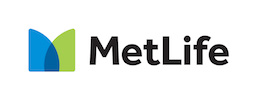2015 Global Microscope Shows Progress in the Environment for Financial Inclusion in Most Countries
Latin America and the Caribbean (LAC) and East and South Asia have the most conducive environments for financial inclusion; India, Haiti, and Egypt are among the most improved countries this year.

December 8, 2015 /3BL Media/ - Access to affordable, diverse financial services is expanding and deepening in many parts of the world, according to The Economist Intelligence Unit’s (EIU) 2015 Global Microscope on Financial Inclusion. Two-thirds of the 55 countries studied have improved their enabling environment for financial inclusion in all areas in the past year. Peru, Colombia, and the Philippines remain at the forefront of the international country rankings.
Developed by the EIU in collaboration with the Multilateral Investment Fund (a member of the InterAmerican Development Bank Group) and CAF—Development Bank of Latin America, and with additional financial and technical support from the Center for Financial Inclusion at Accion and the MetLife Foundation, the Microscope is intended to benchmark national progress on financial inclusion and catalyse reform. The Global Microscope 2015 assesses the regulatory ecosystem for financial inclusion by evaluating 12 indicators across a range of developing economies in East and South Asia, Eastern Europe and Central Asia, Latin America and the Caribbean, Middle East and North Africa, and Sub-Saharan Africa. This year’s Microscope is the ninth edition of the study and the second that looks beyond microfinance, evaluating countries across the wider landscape of financial inclusion.
Compared with last year, the index results show a number of improvements. The average score for the 55 countries has increased (from 46 points to 48 points, where 100 is best) and only one country in 2015 has a score that is 25 points or lower. Moreover, conditions globally have improved this year for ten of the 12 indicators covered in the index. These gains indicate that some very basic elements of policy essential to promoting financial inclusion are now widespread.
Consistent with last year’s overall performance, Latin America and the Caribbean (LAC) and East and South Asia tie for the highest overall scores regionally, with LAC countries capturing five of the global top ten countries by rank. Eastern Europe and Central Asia and Sub-Saharan Africa had very similar scores (one point difference), finishing third and fourth in regional rankings, respectively. The Middle East and North Africa (MENA) posted the lowest overall score in the index.
The countries with the greatest increases in their overall scores this year are more likely to have a comprehensive strategy in place, or at least programmes and laws that tackle multiple, often interlinked, barriers to inclusion simultaneously. India recorded one of the biggest increases of any country in its score this year (10 points), which reflects in part a substantial drive to make banking more accessible to the entire population. This improved accessibility was accomplished through the introduction of guidelines for creating specialised Payment Banks and Small Finance Banks specifically aimed at the poor. Two other top gainers over the past year – Haiti and Egypt (each of which improved their scores by eight points) – implemented measures to establish an even broader set of financial inclusion mechanisms that include government support and regulation and supervision of credit.
Challenges in the financial inclusion environment remain. Many institutions, such as credit unions and co-operatives in LAC and Sub-Saharan Africa, are still not prudentially regulated. Although more countries are developing unique rules for insurance that specifically target low-income consumers (including microinsurance), many countries still regulate this type of insurance under broader policies that cover all insurance types. Finally, consumer protection remains a concern for many consumers of financial products: only eight of the 55 index countries provide a comprehensive framework and capacity to protect the financial consumer.
The Global Microscope 2015 report and benchmarking model are available free of charge on the EIU website at: www.eiu.com/microscope2015

